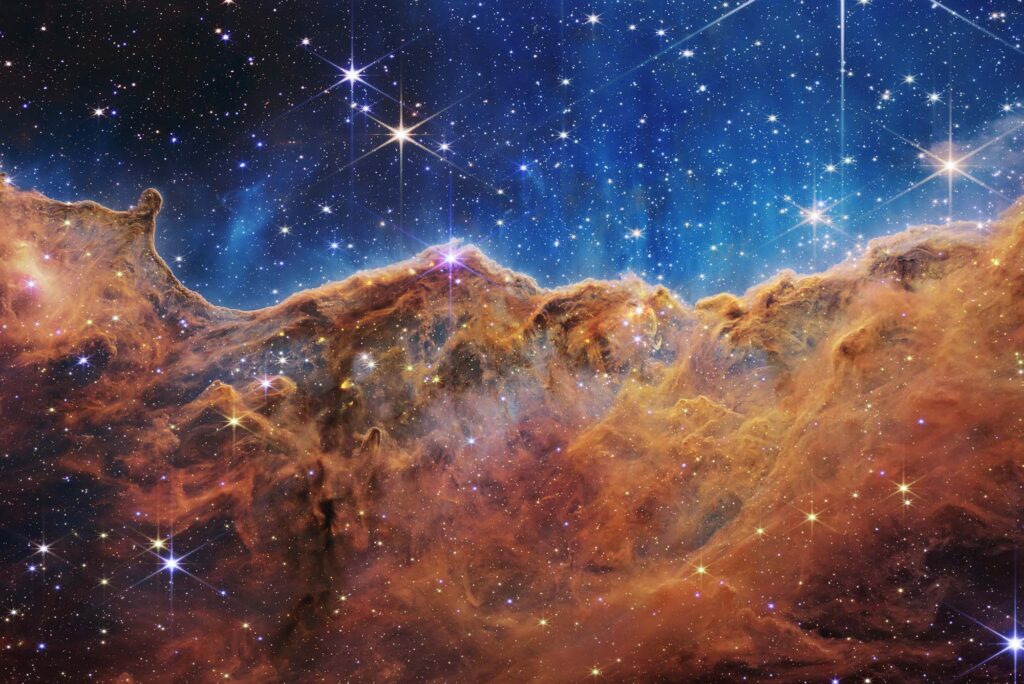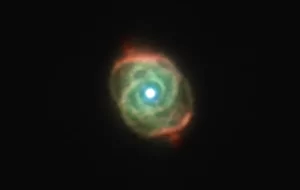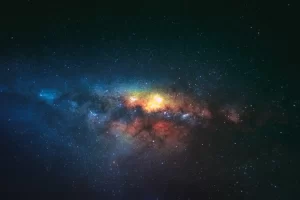
“Cosmos: A Spacetime Odyssey” is a groundbreaking science documentary series that explores the vastness of the universe, the intricacies of time, and the profound role science plays in understanding the cosmos. Hosted by renowned astrophysicist Neil deGrasse Tyson, the show is a modern revival of Carl Sagan’s iconic 1980 series, Cosmos: A Personal Voyage. Premiering in 2014, Cosmos: A Spacetime Odyssey is a visually stunning and intellectually inspiring program that aims to make the mysteries of the universe accessible to a broad audience, all while celebrating the scientific method and human curiosity.
This article explores the essence of the series, its significance, and the impact it has had on the way we think about the universe and our place in it.
The Genesis of “Cosmos: A Spacetime Odyssey”
The revival of the “Cosmos” series was a monumental effort to bring science, wonder, and education to the forefront of public consciousness. The original Cosmos: A Personal Voyage, hosted by Carl Sagan, was one of the most influential science documentaries of the 20th century. It reached millions of viewers around the world and inspired countless individuals to explore science, particularly astronomy and cosmology.
With the original series having left such a profound mark, Seth MacFarlane, creator of “Family Guy” and a passionate supporter of scientific education, teamed up with Neil deGrasse Tyson, one of the most prominent astrophysicists and public intellectuals of our time, to create a new iteration of the series. This updated version would take advantage of cutting-edge visual effects and scientific advances to offer a fresh perspective on topics Carl Sagan had introduced, while also highlighting new discoveries in the field of space and cosmology.
Tyson, known for his charismatic and engaging presentation, was the perfect host for the series. His ability to make complex scientific concepts digestible for a general audience, combined with his enthusiasm for the subject, made him an ideal guide for a journey through the universe.
A Journey Through Space and Time
“Cosmos: A Spacetime Odyssey” is divided into 13 episodes, each exploring a different aspect of science, from the origins of the universe to the role of life on Earth and the exploration of distant galaxies. The series uses the latest scientific research, stunning visualizations, and animation to illustrate key concepts, helping viewers understand phenomena that are often difficult to comprehend.
1. The Cosmos Is Within Us
The series opens with a powerful and poetic message: “The cosmos is within us.” Neil deGrasse Tyson explains that the atoms that make up our bodies were formed in the cores of ancient stars. This idea highlights the interconnectedness of all things in the universe and sets the stage for the journey of discovery that follows. The opening episode touches on the nature of the universe itself, addressing how science has shaped our understanding of the cosmos and how we are all, in a very literal sense, made of stardust.
2. The Ship of the Imagination
One of the signature concepts of the show is the Ship of the Imagination, a fictional, highly advanced spacecraft that allows Tyson to take viewers on an imaginative journey through space and time. The ship serves as both a narrative device and a metaphor for human curiosity, exploring everything from the formation of stars to the creation of galaxies, all the way to the concept of spacetime itself.
In the series, the ship becomes a symbol of our desire to understand the universe, as it travels beyond the confines of space and time, providing a visual experience that brings abstract scientific concepts to life.
3. Understanding the Laws of Nature
Throughout the series, Tyson emphasizes the importance of the scientific method—the way scientists formulate hypotheses, conduct experiments, and revise their understanding of the world based on evidence. Episodes highlight key moments in the history of science, such as Isaac Newton’s discovery of the laws of motion and gravity, and Albert Einstein’s theory of relativity, which fundamentally altered our understanding of time and space.
The show takes viewers through pivotal moments in history, including the work of Galileo Galilei and Johannes Kepler, showing how their discoveries helped shape the way we understand the cosmos. By contextualizing scientific advancements with historical narratives, “Cosmos: A Spacetime Odyssey” demonstrates the importance of science not only as a body of knowledge but also as a tool for expanding human understanding.
4. Life on Earth and Beyond
One of the recurring themes of the show is the search for life beyond Earth. In several episodes, Tyson explores the likelihood of extraterrestrial life and the conditions that would be necessary for life to exist on other planets. The show addresses the potential for life on moons such as Europa (one of Jupiter’s moons) and Enceladus (a moon of Saturn), both of which have subsurface oceans that could harbor microbial life.
The show also explores the history of life on Earth, explaining the concept of evolution and how life on our planet has adapted to various environments over millions of years. This exploration of life on Earth serves as a stepping stone for understanding what conditions might be required for life to exist on other planets and how humanity might one day discover it.
5. The Fate of the Universe
Another critical aspect of “Cosmos: A Spacetime Odyssey” is its exploration of the future of the universe. The show delves into the ultimate fate of the cosmos, covering topics such as dark energy and the accelerating expansion of the universe. It presents the concept that the universe could continue to expand forever, eventually becoming cold and dark, a phenomenon referred to as the “heat death” of the universe.
However, the show also offers a sense of optimism, inspiring viewers to look toward the future with wonder and possibility. The series ends with a reflection on humanity’s role in the larger context of the universe, encouraging the next generation of scientists and thinkers to continue exploring and learning.
Stunning Visuals and Educational Impact
One of the most remarkable features of “Cosmos: A Spacetime Odyssey” is its use of cutting-edge visual effects and computer-generated imagery (CGI). The series brings abstract concepts like the curvature of space and time, the formation of stars, and the immense scale of the universe to life in ways that traditional documentaries could not. The CGI sequences are not just visually stunning; they also provide a deeper understanding of complex scientific phenomena.
The use of stunning imagery, coupled with accessible explanations, allows the series to reach a broad audience, from science enthusiasts to those with little prior knowledge of astronomy. Tyson’s engaging and personable approach makes difficult topics, like quantum mechanics or the theory of relativity, feel approachable and exciting.
“Cosmos: A Spacetime Odyssey” also encourages critical thinking and curiosity. It pushes viewers to question their place in the universe and how they can contribute to scientific progress. The show inspires a sense of wonder and awe about the cosmos while promoting the importance of science literacy and education in the modern world.
Cultural and Societal Impact
The release of “Cosmos: A Spacetime Odyssey” sparked a renewed interest in science and astronomy. The series aired in over 180 countries and garnered millions of viewers worldwide. It was widely praised for its educational value, but also for its ability to inspire awe and wonder about the universe.
The show also generated significant discussion about the role of science in society, particularly in an age when skepticism toward scientific findings can be prevalent. Through his charismatic hosting, Neil deGrasse Tyson emphasized the importance of evidence-based thinking, urging the public to embrace science as a tool for understanding the world around us. In many ways, “Cosmos” became a call to action for a more scientifically literate world.
Awards and Recognition
“Cosmos: A Spacetime Odyssey” received critical acclaim and won several prestigious awards. It was nominated for Emmy Awards and won a Peabody Award for its excellence in educational programming. The show also won several Critics’ Choice Awards and Teen Choice Awards. Its impact on both popular culture and scientific education was undeniable.
Legacy and Continuing Exploration
“Cosmos: A Spacetime Odyssey” is not just a show about space and time; it is an exploration of human curiosity, the drive to explore the unknown, and our desire to understand our place in the cosmos. By combining stunning visuals, groundbreaking science, and engaging storytelling, the series inspires future generations to look up at the stars and ask, “What’s out there?”
The legacy of the show continues with a broader push for science education and exploration, with the latest missions to Mars, the launch of the James Webb Space Telescope, and the growing interest in space exploration. “Cosmos” reminds us that, no matter how vast or mysterious the universe may seem, the pursuit of knowledge is one of humanity’s most enduring qualities.
As Neil deGrasse Tyson says, “The cosmos is within us. We are made of star-stuff.” And with shows like “Cosmos: A Spacetime Odyssey,” we are reminded that the universe is not just out there, it is a part of us.




